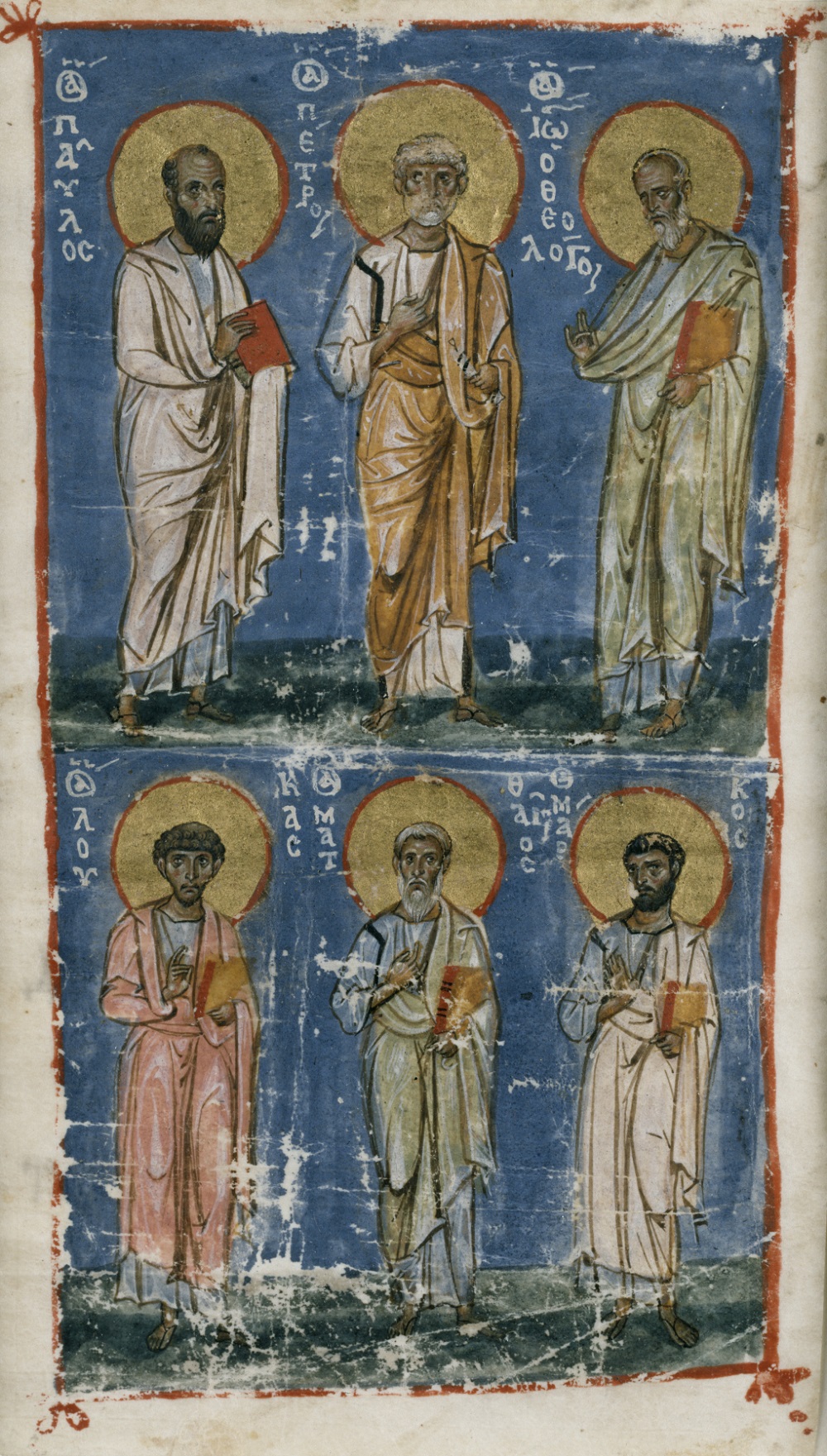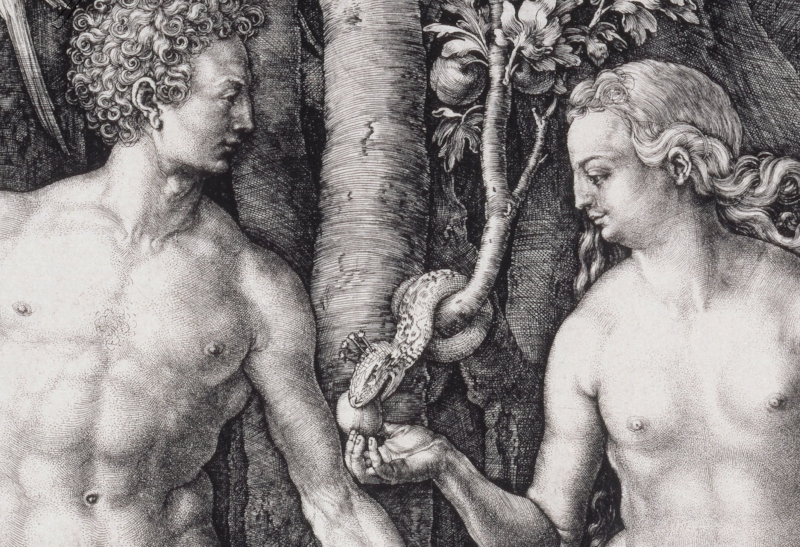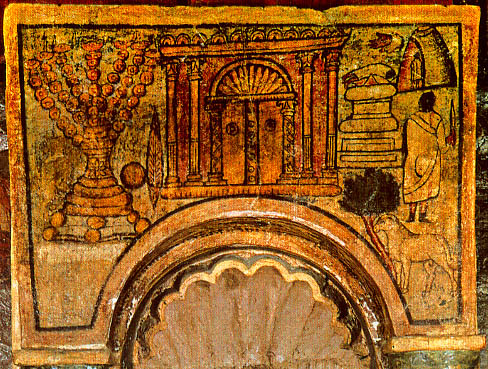Drawing on insights from scholars in Religious Studies who have demonstrated the artificiality of modern distinctions between religious, political, and economic spheres, I consider the ways that political and religious institutions and frameworks could have shaped the boundaries and incentives of economic behavior among Jews in Early Roman Galilee.
Read MoreBook Note | The Song of Songs and the Fashioning of Identity in Early Latin Christianity
Shuve demonstrates that for some of its most prominent Latin readers, the Song was self-evidently an allegory about the Church and its purity.
Read MoreWeek in Review (4/13/18)
Painted Miniature, with Paul, Peter, and the Evangelists | Tempera on Parchment, Byzantine Empire (ca.1070-1100) | Image Source
Painted Miniature, with Paul, Peter, and the Evangelists | Tempera on Parchment, Byzantine Empire (ca.1070-1100) | Image Source
This Week: Adele Reinhartz on anti-Judaism, biblical repentance, Cairo Genizah, ancient Coptic, digital humanities – and more!
Read MoreReflections on My Journey with John | A Retrospective from Adele Reinhartz
For my part, I am satisfied that I have said what I can, and want, to say about this Gospel. Aside from my growing discomfort with John’s anti-Jewish language, I have gained much from my longstanding relationship with this Gospel, including a community of scholars whom I value and respect.
Book Note | How Repentance Became Biblical
In How Repentance Became Biblical, David Lambert argues that, rather than an inherently biblical concept, “repentance” came to be understood as such in a long process that continued into late antiquity.
Read MoreWeek in Review (4/5/18)
Illustration of the Magi | Harvard, MS Syr. 168 | Image Source
Illustration of the Magi | Harvard, MS Syr. 168 | Image Source
This Week: Finding the family of Jesus, Egyptian monasticism, West Syriac liturgy apps, imaginary Phoenicians, Passover, open access journals - and more!
Read MoreWhy Do the Infancy Gospels Matter?
As I studied the infancy gospels, I began to wonder if something had been overlooked in the intense scholarly focus on the figures of Jesus and Mary. That something, I concluded, was the depiction of familial relationships.
Read MoreBook Note | The Red Monastery Church: Beauty and Asceticism in Upper Egypt
With essays from several renowned scholars of Coptology, Byzantine Studies, art history, anthropology, archaeology, and history, this volume seeks to present and preserve the marvels of the early Byzantine Red Monastery Church.
Read MoreWeek in Review (3/30/18)
Neo-Assyrian wall relief depicting an eagle-headed apkallu (sage) | In the British Museum, from the Palace of Ashunasirpal II at Nimrud, Iraq | Image source
Neo-Assyrian wall relief depicting an eagle-headed apkallu (sage) | In the British Museum, from the Palace of Ashunasirpal II at Nimrud, Iraq | Image source
This Week: Ancient Babylonian sages, Enoch, Roman power in late antiquity, forgery and papyri, trailblazing women scholars of Judaism – and more!
Read MoreBook Note | From Adapa to Enoch: Scribal Culture and Religious Vision in Judea and Babylon
Sanders shows that the history of genre is enmeshed with political history as well as with the social and ritual roles that literary forms allow scribes to adopt.
Read MoreWeek in Review (3/23/18)
Illustration of Christ directing John to write the Book of Revelation | Spanish Beatus manuscript, ca.1180, currently held in The Cloisters | Image source
Illustration of Christ directing John to write the Book of Revelation | Spanish Beatus manuscript, ca.1180, currently held in The Cloisters | Image source
This Week: Sibylline Oracles, ancient Israelite priesthood, Canaanite tombs, Genesis Apocryphon, Pseudepigrapha, Dead Sea scribes – and more!
Read MoreDissertation Spotlight | Olivia Stewart Lester
The ongoing appeal of prophecy as a rhetorical strategy in Revelation and Sibylline Oracles 4–5, and the ongoing rivalries in which these texts engage, argue for prophecy’s continuing significance in a larger ancient Mediterranean religious context
Read MoreBook Note | The Levites and the Boundaries of Israelite Identity
Mark Leuchter’s The Levites and the Boundaries of Israelite Identity provides a compelling, innovative account of how the Hebrew Bible both reflects and encodes levitical concerns and power dynamics.
Read MoreWeek in Review (3/16/18)
Detail from the Lod Mosaic | Third-century mosaic from Lod, Israel | Image Details
Detail from the Lod Mosaic | Third-century mosaic from Lod, Israel | Image Details
This Week: Midrashic serpents, Megiddo excavation, the NEH, Roman animals, late antique books, new digital humanities projects – and more!
Read MorePSCO 2017-18: Snakes in the Garden: Sexuality, Animality, and Disability in the Rabbinic Garden of Eden
How do the rabbis conceptualize the biblical “cleverness” of the snake? How do such ideas map onto larger questions of human and animal embodiment?
Read MoreBook Note | Our Divine Double
Stang’s argument successfully and elegantly traces the motif of the divine double throughout these 2nd and 3rd century texts. He offers mostly close readings of these texts in ways that echo ancient Aristarchean criticism and “New Criticism,” and, as one can see in the introduction and the philosophical conclusion, he sees these texts in light of perennial questions of selfhood.
Read MoreWeek in Review (3/9/18)
Mosaic representing Tabernacle with flanking menorah | Fifth-century synagogue, Tzipori | Image Source
Mosaic representing Tabernacle with flanking menorah | Fifth-century synagogue, Tzipori | Image Source
This Week: Mandaeans, the Temple, #InternationalWomensDay, maps and digital pedagogy, J.Z. Smith, Paul and Patristics – and more!
Read MoreDissertation Spotlight | Nathan Schumer
The Torah Shrine at Dura Europas via Wiki Commons
The Torah Shrine at Dura Europas via Wiki Commons
"Why does the Mishnah get so many historical details about the Second Temple period right?"
Read MoreBook Note | From Sasanian Mandaeans to Ṣābians of the Marshes
Van Bladel’s book is thus not only a story of the Mandaean past, but a window into Sasanian Mesopotamia and the forging of “religious communities” beyond the “Greco-Roman” boundaries.
Read MoreWeek in Review (3/1/18)
Mosaic section with Red Ship | Piazza Armerina, Sicily | Image Source
Mosaic section with Red Ship | Piazza Armerina, Sicily | Image Source
This Week: Late antique North Africa, Purim, keeping #digitalhumanities #openaccess, illegal papyrus trading, Apocryphal Arabic – and more!
Read More








![Odilon Redon [Public domain], via Wikimedia Commons](https://images.squarespace-cdn.com/content/v1/5449167fe4b078c86b41f810/1522067286818-UQFGDLH9TBO2F6QFT8N2/576px-1908_Redon_Oannes_anagoria.JPG)









